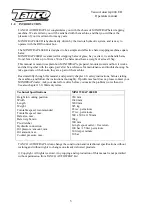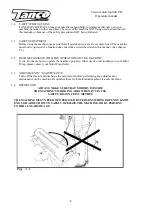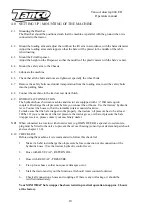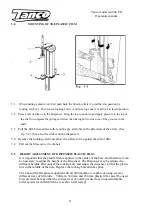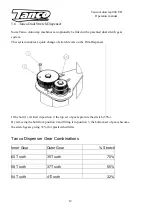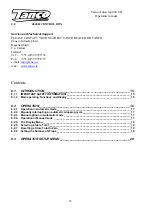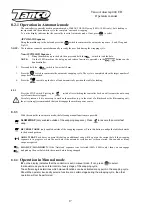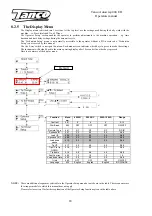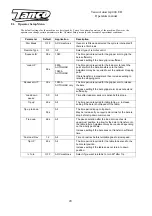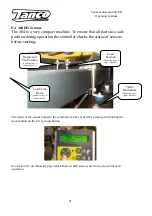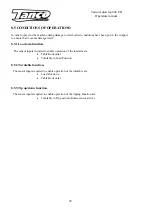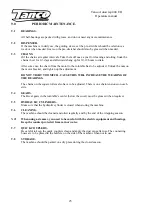
8
Tanco Autowrap 404 EH
Operators manual
3.0
GENERAL INFORMATION ON BALE WRAPPING.
3.1 THE
PRINCIPLE.
The
advantages of round/square bale silage are many, and include fewer feed units, a flexible
harvesting system, large capacity and the possibility of selling feed units.
In principle, the same fermentation processes occur whether the fodder is placed in a silo or
pressed into bales and packed in plastic, i.e. lactic acid fermentation in anaerobic conditions. The
oxygen in the bale must be exhausted before fermentation begins.
The grass should be dried to approximately 3040% solid content. The solid content can be
determined by twisting the grass by hand. If drops of liquid are forced out of the grass, the solid
content is less than 25%. Low solid content, (wet grass), can lead to increased butyric acid
fermentation if preservatives are not added to the grass. If the solid content is to high, (over
50%), normal fermentation will not take place and there will be enough oxygen in the bale to
produce mould fungus.
3.2 THE
BALER.
It is vital that the baler produces compact, well-formed bales, as misshapen bales can be difficult
to wrap. Wrapping will also often take longer, thereby increasing the amount of plastic used.
3.3 TYPES
OF
PLASTIC.
A good type of plastic with good adhesive properties, and which is recommended for bale
wrapping, must be used. The thickness of the plastic film should be at least 25 micron. (25/1,000
mm). In order that the plastic tightens sufficiently around the bale, it is stretched before being
wrapped, so it is somewhat thinner when it is put on the bale. With short-term storage, (up to
eight weeks), it is recommended that bales have a minimum of four layers of plastic at the
thinnest points, with at least 52-53% overlap.
For long-term storage, or when the grass is wet when it is wrapped, the bale should have 6 layers,
and the same amount of overlap. If thinner plastic is used, more layers should be applied. If it is
very hot the plastic will be stretched further, and more layers should be applied. It is better to
have slightly too much than too little plastic on the bale.
From experience, light plastic produces slightly lower temperatures within the bale, and tends to
improve feed quality.
3.4 STORAGE
LOCATION.
Care should be taken in finding a suitable location for the storage of bales. The storage location
should preferably be prepared before the bales are laid out. An elevation close to well-drained
roads is recommended. If the wrapped bales are simply placed on stubble there is a danger of the
plastic being pierced. A tarpaulin or a thin layer of sand should therefore be laid where the bales
are to be stored over the winter.
Bales should be stored in the shade as far as possible. This reduces the danger of air leakage in
the bales. A bale which is stored in sunlight and which therefore undergoes greater swings in
temperature “pumps ins’ a great deal of air in comparison to a bale which is stored in the shade.
According to ~‘Teknik for Lantbruket” [Technology for Agriculture] in Sweden, a bale which is
stored in the shade has only 40% of the air leakage of a bale which is stored in sunlight.





